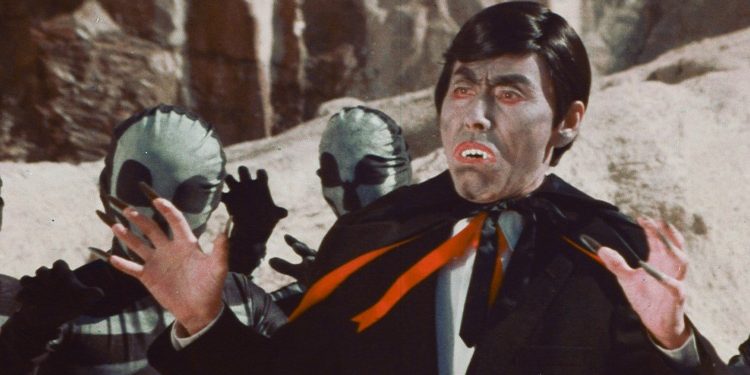The Dragon Lives Again: a ’70s martial arts multiverse
Remember when multiverses were everywhere? Even if the concept’s prevalence has subsided somewhat over the past year, it wasn’t that long ago when mainstream audiences were subjected to multiple films which all involved characters from different fictional universes, or even different variations of the same character, encountering one another, a premise which has proven to sustain multiple different Spider-Man movies. While still undeniably present within the zeitgeist, perhaps the reason for audience’s recent exhaustion with the multiverse as a premise is how cynical these films feel – symptoms of a broader creative malaise – as more and more intellectual properties or brands are crossed over just because it can be so easily facilitated by our modern landscape of corporate monopolies.
Last year’s Deadpool and Wolverine was especially egregious in this regard, in that the insider studio politics of Twentieth Century Fox being consolidated into the Walt Disney corporation were an explicit part of the film’s text. Even if this may read as a modern trend, there is in fact some precedent for this kind of film, specifically the 1977 Hong Kong martial arts film The Dragon Lives Again, in which “Bruce Lee” (it’s not actually Bruce Lee) crosses over with characters from The Exorcist, The Godfather and of course James Bond, amongst others.
This bizarre film was conceived as part of the wave of “Bruceploitation” films popular in Hong Kong at the time, a craze which involved casting Bruce Lee lookalikes in cheaply produced martial arts action films, following Lee’s abrupt death shortly after achieving international fame. This trend sought to capitalise both on Lee’s continued popularity – domestically and abroad – and the fact that Lee’s name could be leveraged as an identifiable brand without needing to pay any kind of royalties because he was a real person, rather than a fictional hero, regardless of how disrespectful it seemed.
Not that fear of litigation, or indeed respect, appeared to be at the top of anyone’s concerns during the production of The Dragon Lives Again
Not that fear of litigation, or indeed respect, appeared to be at the top of anyone’s concerns during the production of The Dragon Lives Again, which in addition to utilising public domain characters like Count Dracula, also makes use of characters that were definitely not public domain like James Bond and Popeye. Indeed, this equivocation remains one of the most interesting aspects of the film: that Lee’s celebrity persona was such that only four years after his death he was viewed to be as monumental in cultural stature as other fictional, larger-than-life heroes and villains like James Bond and Dracula.
The film’s plot is equally bizarre, depicting “Bruce Lee’s” (actually played by actor Bruce Leung Siu-Lung, who looks nothing like the real Bruce) descent into the underworld, following his death, as he battles several disparate fictional characters in an attempt to win back his mortality and return to Earth. The film’s antagonists are a group of recognisable characters from then recent popular western films: Vito Corleone from The Godfather (1972) and Father Merrin from The Exorcist (1973), who are both only ever referred to as “Godfather” and “Exorcist” – just to make the whole production feel even less official – in addition to the aforementioned James Bond and Dracula, plotting to overthrow the King of the Underworld to rule it for themselves.
The Dragon Lives Again may ultimately be animated by the same commercial cynicism as the multiverse’s modern manifestation […] but it at least has the decency to be weird
While the meagre production values of The Dragon Lives Again contrast hard with the corporate excess of modern blockbusters, multiverse or otherwise, there is a certain lost charm to the whole affair that makes it memorable in its absurdity. The Dragon Lives Again may ultimately be animated by the same commercial cynicism as the multiverse’s modern manifestation, a largely mindless attempt to exploit the continued popularity of Bruce Lee and the high-profile success of a set of recent western films, but it at least has the decency to be weird. There is a genuine strangeness to the spectacle offered by The Dragon Lives Again, almost serving as a funhouse mirror reflection of popular culture at the time, which cannot be matched by modern franchise crossovers. Current film franchises have become atrophied in their homogeneity, resulting in The Dragon Lives Again looking more and more like a pleasant alternative than the bizarre distraction it perhaps should read as.

Comments